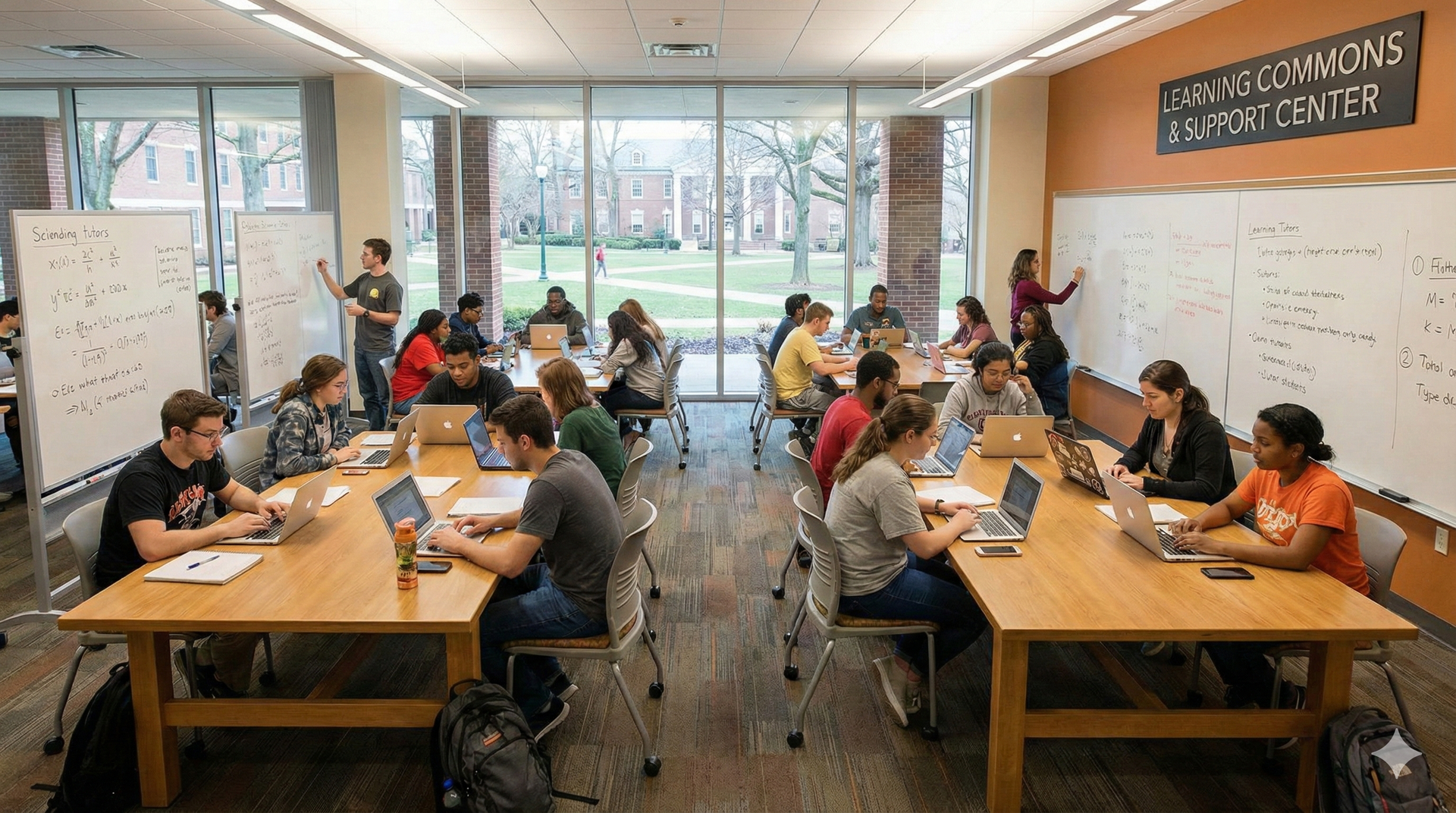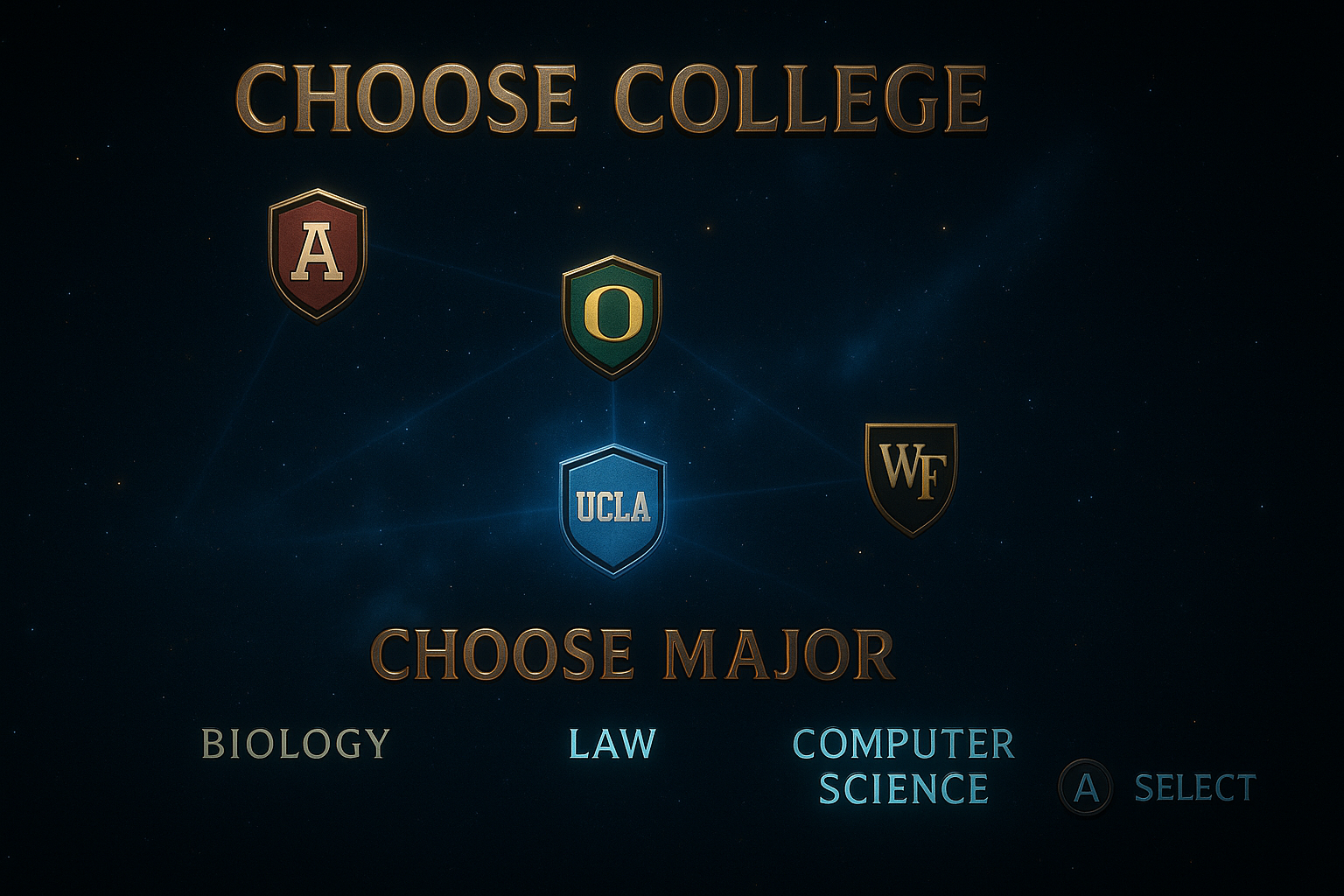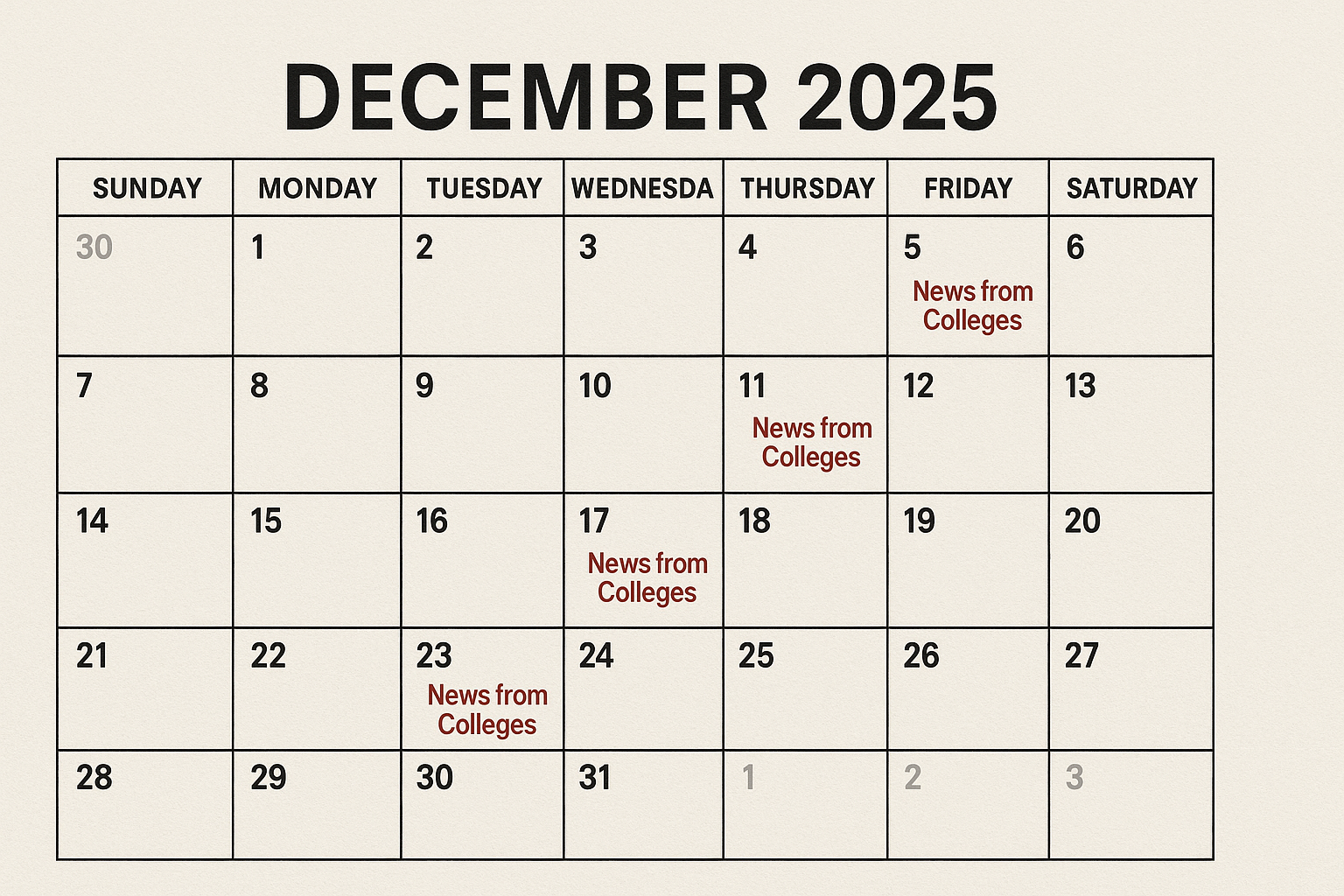This page is licensed under Creative Commons under Attribution 4.0 International. Anyone can share content from this page, with attribution and link to College MatchPoint requested.
Updated Information on All Things College Admissions

College planning can often feel like following Google Maps: every turn planned, every step predictable, all aimed at one specific destination. But the journey to college isn’t a straight line — it’s more like a road trip filled with detours, discoveries, and unexpected opportunities for growth. Colleges aren’t looking for students who follow a rigid formula; they’re searching for individuals who explore their passions, embrace challenges, and reflect on their unique paths. It’s about finding meaningful destinations along the way, not just arriving at the endpoint.

Welcome to January. If you are like most of the families we work with, you are probably looking at the calendar and wondering how summer is already on the horizon. We know the feeling. The holiday decorations are barely packed away, the second semester is just revving up, and suddenly, summer program applications are opening. It is a busy time, and adding summer planning to the academic mix can feel overwhelming. But take a deep breath. You are right on time.

"Does this college have learning support?" We hear this question from parents every day. It seems like a simple "yes" or "no" question, but in the landscape of higher education, the answer is often "it depends." Securing the right academic assistance for a learning-different student means understanding a spectrum of offerings. "Learning support" is a broad term that can range from a drop-in writing center to a dedicated specialist who meets with your student every morning.

As a parent, it is natural to feel a knot of anxiety tighten in your stomach when you look at your teenager's high school transcript. In the high-stakes world of college admissions, we often find ourselves fixated on the numbers. We worry about the GPA, the standardized test scores, and the class rank. For parents of neurodiverse students or those with learning differences (LD), this anxiety is often compounded by a deeper, quieter fear: Will they actually be able to make it on their own?

When it comes to the highly competitive world of college admissions, every detail of a student’s high school experience matters—especially their academic choices. One of the biggest mistakes students make is skipping or dropping a core subject too early in high school. While it might seem harmless to forgo a fourth year of foreign language or to replace senior-year science with a free period, these decisions can send the wrong message to admissions officers and hurt your teen’s chances of getting into their dream college. Here’s why taking all five core subjects—English, math, science, social studies, and foreign language—for all four years of high school is essential and how skipping one can cost your teen their spot at a selective institution.

Securing the right academic assistance for a learning-different student means understanding a spectrum of offerings. From light support to full immersion support, multiple tiers of college support exist (though prices increase as the support gets more intense). Matching the right amount of support with your teen's current needs will help create a smoother transition to college, resulting in early "wins" for your student that build confidence and momentum.

Selecting the right high school courses is a critical step in helping your teen achieve their college aspirations. With admissions becoming increasingly competitive, a thoughtful course strategy can make a significant difference. By focusing on academic rigor, balance, and alignment with future goals, you can set your teen up for success.

Test-optional doesn’t mean test-ignored! Submitting a strong SAT or ACT score can still boost your application, showcasing your academic readiness and helping you stand out in a competitive pool. Start by researching the 25th–75th percentile score ranges for your dream schools—like NYU (targeting 1540+ SAT) or Wake Forest (aiming for 34+ ACT). Aiming for the 75th percentile or higher ensures your score is a strength, not just a formality.

For many high school students, a summer job or internship is often seen as just a way to earn some spending money or boost a college application. But the reality is, these experiences offer far more than just a paycheck or a line on a resume. They provide students with essential life skills—like responsibility, communication, and problem-solving—that prepare them for success in college, careers, and life. Whether it’s working in a retail store, interning at a local business, or volunteering at a non-profit, summer opportunities create a foundation for growth and independence. Here’s how summer jobs and internships help students develop the skills that matter most.

If you’re a high school student with dreams of majoring in biology at a competitive college, summer is the perfect time to deepen your knowledge, gain hands-on experience, and build a strong foundation for your future studies. Top biology programs look for students who show a genuine passion for science, curiosity about the natural world, and the ability to take initiative in their learning.

If you’re a high school student dreaming of majoring in business at a competitive college, summer is more than just a break—it’s an opportunity to stand out. Top business programs are looking for students who demonstrate initiative, leadership, and a passion for learning beyond the classroom. The right summer experiences can help you develop real-world skills, showcase your drive, and craft a compelling story for college applications.

Summer can be a season of discovery, growth, and joy—especially for neurodiverse students. With thoughtful planning, families can create meaningful summer experiences that align with their child’s strengths, interests, and unique needs. Whether it’s trying a new activity, honing a skill, or simply enjoying structured downtime, summer offers the flexibility to nurture confidence and personal development without the pressures of a typical school year. If you’re unsure where to start, this guide will help you navigate summer opportunities that foster growth and independence while ensuring a positive and supportive experience for your neurodiverse student.

Every year, families ask us the same question. Do summer activities really matter in college admissions? The answer is yes, but not for the reasons most people assume. Colleges are not counting hours, tracking every program, or expecting students to fill every week with something impressive. What matters is how a student uses the time. Summer gives teens more freedom than any other season, and that freedom reveals who they are, what interests them, and how they choose to grow.

Maximizing your AP success can be a game-changer in the college admissions process, especially for schools that value academic rigor. Did you know that at UCLA , strong AP scores are explicitly considered as part of the admissions review? Not only can high scores strengthen your application, but they may also earn you college credit, saving both time and money. Choosing the right AP classes during sophomore and junior year is just as important as excelling in them—focus on your strengths and future goals to make the most of these opportunities.

When he finished tenth grade, he was in the top 7% of his class but was still unsure what he wanted to study. He did well in school and loved being around people, but nothing pointed clearly toward a major. Everything changed the summer he took a job at a local coffee shop. What started as a simple part-time role helped him discover his interest in communication, build real-world confidence, and create the kind of clear story UT Austin looks for when they review applicants by major. That path led him to the Moody College of Communication.

Parents of neurodiverse teens know how unpredictable summers can be. When the school year ends, the routine disappears, and the structure that helps their student thrive can suddenly feel out of reach. Many families hope for a summer that brings rest, confidence, and clarity. This case study shows how one neurodiverse teen found all three through a life-changing pre-college program. The program not only helped them discover their strengths and define their future major, but also played a key role in earning admission to colleges their family once viewed as far beyond reach, including UT Austin, Macalester, Trinity University, the University of Denver, and the University of Pittsburgh.

The first big data drop of the year from the Common App is here, and it sends a clear message. College demand is exploding again. By November 1, a stunning 962,284 seniors had already applied to at least one college. That is a 5% jump from last year. Even more striking, students submitted 4.7 million applications, a 10% year-over-year surge.

Parents often think summer is a break from college pressure. UT Austin does not see it that way. Summer is one of the clearest windows into who a student is becoming. When school stops dictating their time, UT can see how a teenager chooses to grow, explore, stretch, and lead. In a world where tens of thousands of students apply to the same majors, summer is often the difference between an application that blends in and one that stands out. UT reads every summer choice through one central question: Does this student show genuine direction, curiosity, and readiness for their major

Today’s teenagers are not choosing college for the same reasons their parents did. In a recent survey of over 5,000 college freshmen, only about 20% say the “college experience” matters most in their decision. The rest are thinking about outcomes. They want a return on investment, a clear path to a career, and a way to use their strengths in the real world. This is a major shift. Parents once picked colleges for community and campus life. Students today are evaluating programs, job placement, and practical skills. The modern college search is about connecting a student’s natural aptitudes with programs that lead to success after graduation.

Some students transform during the school year. He transformed during the summers . Three intentional summers helped him uncover a passion for data, find direction in his academics, and ultimately earn a spot in UT Austin’s Statistics and Data Science program . Each summer built on the last—moving from curiosity to skill to mastery. By using his breaks to explore what he loved, he changed not just his college options but his confidence in who he was becoming.

When she finished 10th grade at her public high school, she felt lost. Her GPA was solid but not in the top 15 percent, and she wasn’t sure what she wanted to study. She played soccer, worked hard in her classes, and liked psychology—but none of it pointed clearly toward a college major or future path. Two years later, she had admission offers from Georgetown University, The University of Texas at Austin, and even an Ivy League school. The change didn’t come from adding more activities or raising her GPA. It came from how she used her summers—h ere’s how she found clarity, confidence, and direction .

Winter break is a rare pause in a busy year. It gives students time to rest, reflect, and reset before the spring semester. Without homework and tests, students can step back and focus on personal growth. These few weeks can help them clarify goals, explore interests, and get organized for what is next.

For this year's high school seniors, early decision notifications stretch from early December through mid-February. These rounds shape the majority of incoming classes at many selective colleges, and they reveal much about where competition is tightening. This week-by-week guide highlights only Early Decision (ED1 and ED2) schools, including their exact notification phrasing and admit rates when available.

For the Fall 2026 admissions cycle, highly selective colleges and universities across the country are experiencing a surge in early applications once again. After a few years of post-pandemic fluctuation, this year’s data show a clear trend: students are applying earlier, in greater numbers, and with increasingly strategic intent. Schools reporting significant increases include Boston College (up 15%), Duke University (up 8%), Emory University (up 21%), Northwestern University (up 15%), New York University (up 10%), the University of Georgia (up 14% in Early Action), the University of Pennsylvania (up about 12%), and the University of Virginia (up 11% in Early Decision). The upward movement at these institutions continues a broader pattern of front-loaded admissions cycles, where students aim to maximize every possible edge.

More teens are working today than in the past twenty years, and for good reason. A part-time job in high school teaches lessons that go far beyond earning money. Working helps teenagers grow more responsible, confident, and independent. It also gives them real-world experiences that strengthen college applications and prepare them for life after graduation. Having a job can be one of the most powerful ways for students to show initiative and make an impact. When teens approach work with curiosity and purpose, they gain more than a paycheck. They learn who they are becoming.

The new year brings a familiar ritual for many families: summer planning. Parents open their calendars, teens start comparing programs, and suddenly the months that should feel open and full of possibility begin to feel crowded. The questions start early. What should I do this summer? Which program will look best? Will I fall behind if I don’t do enough? What begins as a practical exercise can quietly become something heavier—the pursuit of “exceptional.”

Winter break is when most families finally breathe. The college deadlines slow down, the group chats quiet, and—for a few weeks—there’s time to think. Yet for many parents, it’s also when the next round of pressure sneaks in: What should my teen do this summer? The inbox fills with glossy emails about “elite experiences” and “college-level rigor.” Each one promises transformation, often with a five-figure price tag. It’s easy to believe that if the opportunity is prestigious and expensive, it must be worth it. But here’s the truth: we meet students every year who spent $10,000 on a summer program that changed nothing. They come home with a certificate, a sweatshirt, and a nice photo—but no new insight, direction, or spark.

Every winter break, parents start scrolling. Summer programs, internships, “college-ready” camps—each one promising an edge. It’s a familiar ritual built on fear: that a slow summer means a lost opportunity. But much of what parents believe about summer and admissions is outdated. The truth is simpler and far less performative. The best summers build curiosity, independence, and direction, not panic.

Winter break is the perfect time for families to pause, reflect, and plan for the future—including how to make the most of the upcoming summer. Colleges aren’t looking for students who cram their schedules with countless activities; they’re looking for depth, passion, and meaningful impact. The months of summer offer a unique opportunity for students to explore their interests, develop new skills, and make a difference.

Summer is more than a pause between school years. It’s an open canvas for students to explore interests, develop new skills, and grow into the people they’re becoming. Whether that looks like volunteering at a local nonprofit, shadowing a professional, or launching a creative project, the summer months offer the freedom to take charge of personal and academic growth. As students move through high school, what they need from summer changes. Freshman year is about curiosity. Sophomore year is about commitment. Junior year is about impact and preparation. Each season builds toward a story that colleges recognize as authentic, purposeful, and uniquely theirs.


